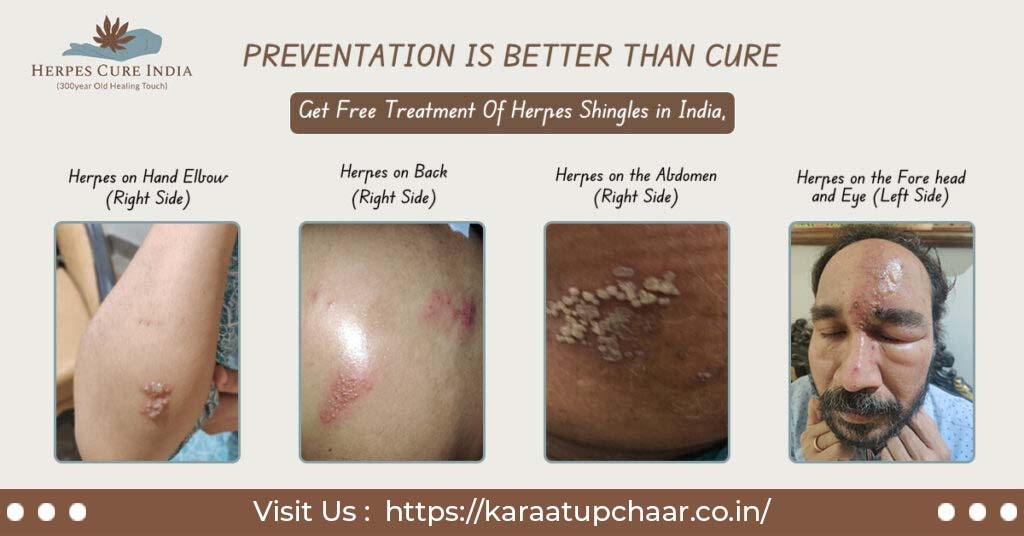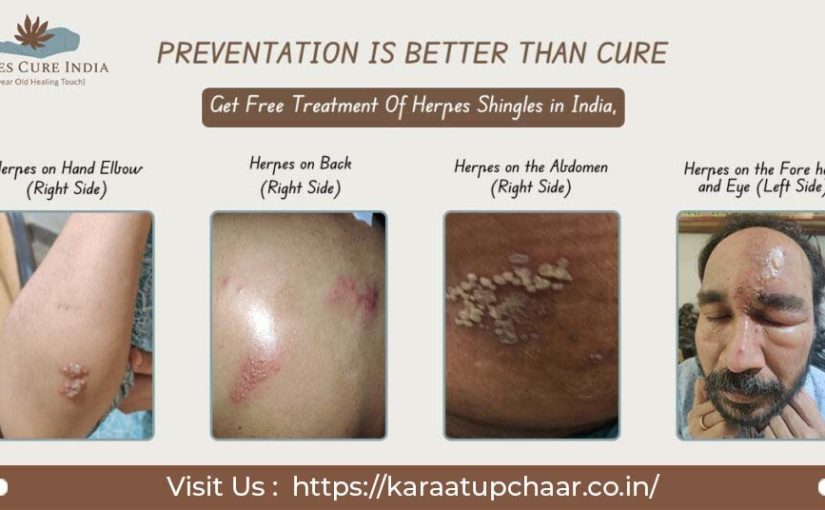
What are Herpes Shingles and Its Symptoms – Karaatupchaar
Understanding Herpes Shingles
Herpes Zoster, commonly referred to as Herpes Shingles, is a viral infection that affects the nerves and causes painful blisters on the skin. These blisters can appear anywhere on the body. Anxiety and nerve pain can persist for months after the rash clears up. The same virus that causes chickenpox is responsible for Herpes Shingles. After a person recovers from chickenpox, the virus remains dormant in the body and can reactivate years or even decades later to cause shingles. Approximately 90 percent of the population in the Indian subcontinent has had chickenpox, making them vulnerable to shingles. The risk of developing shingles increases with age, so the shingles vaccine is recommended for all healthy individuals over the age of 50. It is also recommended for people 19 and older who have weakened immune systems due to illness or treatment. Although possible, shingles in children are rare.
Who is Susceptible to Acquiring Herpes Shingles?
Those who have had chickenpox are at a higher risk of developing Herpes Shingles later in life. The likelihood of shingles increases under the following conditions:
- Weakened immune systems (e.g., individuals with cancer, HIV, organ transplant recipients, or those undergoing chemotherapy)
- People around fifty years of age or older
- Individuals who have been ill recently
- Those who have experienced trauma
- Individuals under significant stress or anxiety
After a chickenpox infection, the virus does not leave the body but instead lodges in the dorsal ganglia at the roots of the spinal nerves. Most people are unaware that the virus is still present in their bodies. The exact reason for the virus reactivating isn’t always clear, but it often happens during times of stress or when the immune system is compromised.
Symptoms of Herpes Shingles
Herpes Shingles is characterized by a red, itchy rash that typically affects only one side of the body or face at a time. Even before the rash appears, you may experience itching, burning, or tingling in the area where the rash will develop.
The impact of the infection on the nervous system can last for months or even years. The likelihood of experiencing long-term nerve pain increases with age, and the pain can be described as burning, throbbing, aching, or stinging. In some cases, Herpes Shingles may also cause conjunctivitis (pink eye) if the virus affects the eyes.
Early Symptoms of Herpes Shingles:
- Fever
- Chills
- Fatigue
- Sensitivity to light
- Uncomfortable feelings in the stomach
A few days after these initial symptoms, additional signs of Herpes Shingles may develop, such as:
- Itching or burning sensation in a localized area of the skin
- Discoloration of the affected skin
- A small, raised rash in the affected area
- Fluid-filled sores that eventually scab over
- Skin irritation ranging from mild to severe
Prevention is Better Than Cure: Get Vaccinated Against Herpes Shingles
Vaccination is the most effective way to prevent Herpes Shingles and reduce the risk of developing long-lasting pain if you do get shingles. The zoster vaccine is recommended for all healthy adults aged 50 and older, as well as individuals aged 19 and older who have compromised immunity due to disease or treatment. Even if you’ve had chickenpox before, the virus can still reactivate as shingles. Those who have had chickenpox are still eligible for the vaccine to prevent potential outbreaks. There is no specific time limit for receiving the shingles vaccine after having chickenpox, but it is generally recommended to wait until any active herpes outbreak has subsided before getting vaccinated. It’s always best to discuss the timing of vaccines with your healthcare provider.

